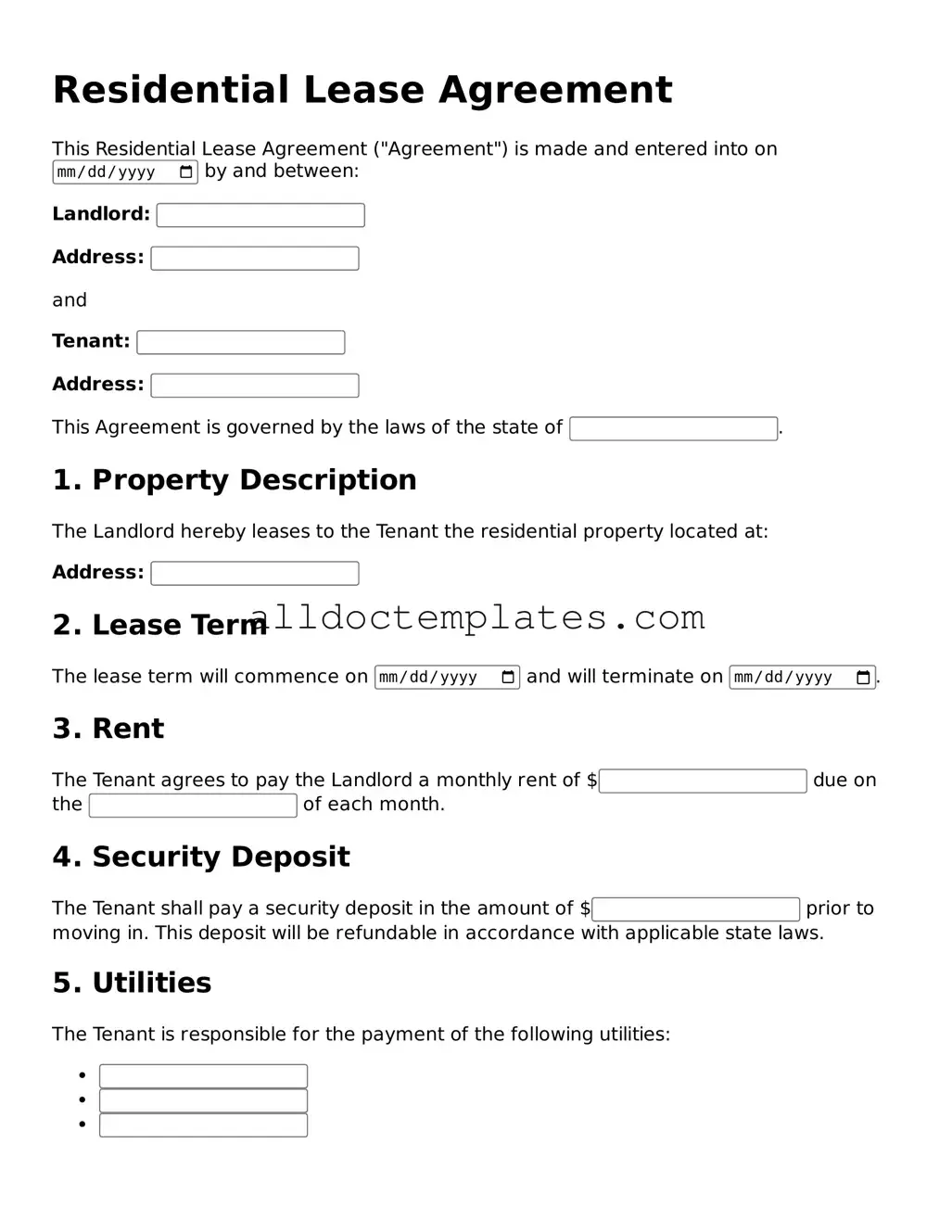Valid Residential Lease Agreement Template
A Residential Lease Agreement is a legally binding document that outlines the terms and conditions between a landlord and tenant for renting a residential property. This form serves to protect the rights of both parties while clearly defining responsibilities regarding rent payments, maintenance, and other essential aspects of the rental relationship. Understanding this agreement is crucial for ensuring a smooth and respectful landlord-tenant experience.
Get Your Form Now
